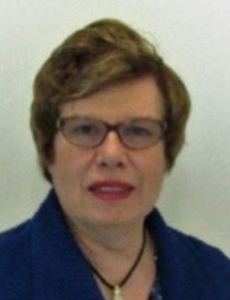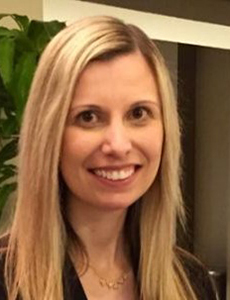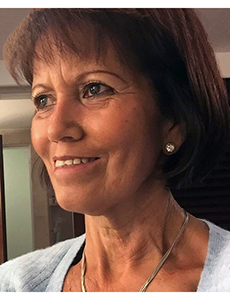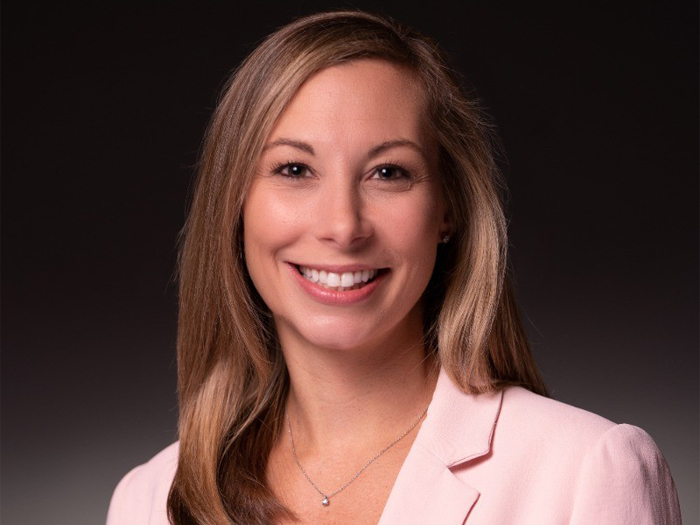How Bayne, Genex and Sikorsky Banded Together to Create an Optimal Return-to-Work Program

Return-to-work is one of the most important parts of the workers’ compensation process. For the industry, it represents the beginning of the end of an injury.
Bringing a worker back, even in a modified duty capacity means that the healing process is well underway and the worker is one step closer to being back to their pre-injury life.
In a National Workers’ Compensation and Disability Conference (National Comp) digital session, professionals from Sikorsky, Genex and Bayne Consulting shared the success of their approach to creating an optimal return-to-work program.
The session, “Onsite Return to Work: A Sikorsky Approach,” discussed how the methods used by Sikorsky significantly lowered disability duration periods that a worker would typically undergo after injury. With this approach, workers are returning to work at a faster pace while still receiving top-notch medical care.
The speakers included Judy Meyer, manager of utilization management for Genex Services; Lea Sampiere, medical department operations, Sikorsky, a Lockheed Martin Company; and Maria Bayne, president of Bayne Consulting.
The speakers focused on factors that could hinder an injured worker’s return-to-work claim, the benefits of a detailed job analysis when it comes to designing light-duty tasks, implementation of medical teams when creating a realistic return-to-work timeline and the difference a collaborative return-to-work program can have on a company.
There are several reasons as to why an injured worker may not be returning to work as effectively as they hoped. Sikorsky’s method looks at identifying possible roadblocks before they manifest and preparing to respond to it.
The Approach and the Sikorsky Matrix
A strong component of Sikorsky’s approach to return-to-work is the way it prioritizes openness communication. Without this, the program does not thrive.
This communication not only exists between members within the program but also with the injured worker as well. As Meyer said, “It really begins with the initial contact with the injured worker.”
Making communication an essential part of the return-to-work process began when Lockheed Martin acquired Sikorsky in 2015.
After the acquisition, the companies evaluated their workers’ compensation programs to find similarities, differences and where the disconnections may reside.
Through their research, Lockheed Martin discovered a disconnect created largely by miscommunications stemmed between supervisor or employer and physician.
The physician’s language may not always be clear or readily understood by the supervisor, especially terms such as “walking as tolerated” or “sedentary work.”
This resulted in supervisors not always understanding a worker’s physical capabilities, thus creating a risk of re-injury when employees returned to work.
To address this lack of clarity, Sikorsky’s new workers’ compensation program included a job analysis database, created in part with Genex. The database has over 250 analyses for common factory jobs that are much more detailed than a job description.
Specifically, the analysis would highlight the physical requirements of the job, which then enables a physician to construct a much more accurate physical therapy regiment.
Many times, the worker’s physician may not fully understand the requirements and logistics of the injured worker’s job, thus making the return to work more difficult.
If the physical therapy recommendations do not equally coincide with the worker’s restrictions, it could hinder a full return to work.
The job analyses contain information about the job, such as estimated amount of time sitting, standing, kneeling and squatting, which provide physicians with a clearer understanding of the role and how to best physically care for the worker.
This is especially helpful when creating light-duty protocols for a return to work.
To further improve the communication between supervisor and physician, Sikorsky created a matrix that studied return to work protocols and physician protocols within injured workers’ claims.
After brainstorming with both physicians and supervisors on how to bring an injured worker back to work efficiently and safely, Sikorsky discovered a method to both accommodate the worker’s injury and recovery while still enabling productivity in the workplace.
The matrix concluded that meeting with a physician and shifting work positions every 3-4 weeks produced the most optimal outcome for a worker’s return to work.
Introducing the Key Players
Additionally, Sikorsky’s message throughout the entire recovery process remains the same: the goal is to have the worker returning to work while receiving the best medical care available.
Not only is this a guiding message for the injured worker, but it creates a goal-oriented mindset for the team. Every team member is driven by this mission.
Several team members, dubbed “players,” are involved in Sikorsky’s return to work method.
Each player has a specific task which relies on the completion of the prior, thus enabling the process to be completed seamlessly. The players and their functions include:
• Supervisor: plays a proactive role in the process as their relationship to the injured worker is pivotal in recovery; receive modified working regulations before the worker returns to work and ensures that these regulations are being upheld.
• Employee: expectation is that they will return to work in some modified or transitional approach; plays an instrumental role in collaborating on the light-duty job tasks they will perform, which typically gets finalized before their first physician visit.
• Return to Work Specialist: continues creating modified tasks that recovered workers could perform when they return, despite a completed job analysis.
• Case Manager: ensures a smooth process; refer to the matrix and ensure that light-duty tasks are clearly identified; works with the injured worker on signing off on the light-duty tasks that will be performed, which is the first information a physician will see when meeting with the worker.
• Physician: reviews job tasks and light-duty protocols; evaluates the worker’s injury against job requirements and will continue to re-evaluate every 3-4 weeks.
• Consultant: oversees the entire program; ensures compliance with the matrix on a case-by-case basis.
Results and Takeaways
After implementation of their injured worker program, Lockheed Martin and Sikorsky saw outstanding results.
Within 6-9 months, the companies reported a positive shift within their process and were able to decrease disability duration by 48%. It is also very rare that an injured worker does not remain with their job after returning post-injury.
What have professionals from Lockheed Martin and Sikorsky learned through their new program? The important of consistent follow-ups with physicians and the ability to remain innovative when it comes to creating light-duty tasks are just two.
But the program and its success have not only produced enthusiasm within the players, but it has empowered them. Meyer emphasized the key role that communication plays in this.
“It involves everyone’s communication and everyone working together,” she said.
“It’s a thrill to see how well the team works together and has the same goal: return to work for the injured worker, aide in the recovery and make sure it’s a safe return-to-work.” &
 National Comp — the National Workers’ Compensation and Disability Conference — is back! We’re planning an in-person show for October, 20-22, 2021 and we’re excited to see everyone while still adhering to all safety protocols set forth by local and national health authorities at the time of the event. Register today!
National Comp — the National Workers’ Compensation and Disability Conference — is back! We’re planning an in-person show for October, 20-22, 2021 and we’re excited to see everyone while still adhering to all safety protocols set forth by local and national health authorities at the time of the event. Register today!
This year, we’ll feature seven tracks — from core content on medical and pharmaceutical management, claims and return-to-work, plus new and expanded avenues to explore like risk finance and injury prevention. All of our educational sessions are chosen for their ability to deliver sound takeaways and ideas that attendees can use right now.
In the meantime, National Comp will continue bringing you free virtual, educational content through our digital sessions series and our CompTalks program. Register today to make sure you don’t miss a digital session and check out our on-demand CompTalks library. Missed a session? Watch it here on-demand.













